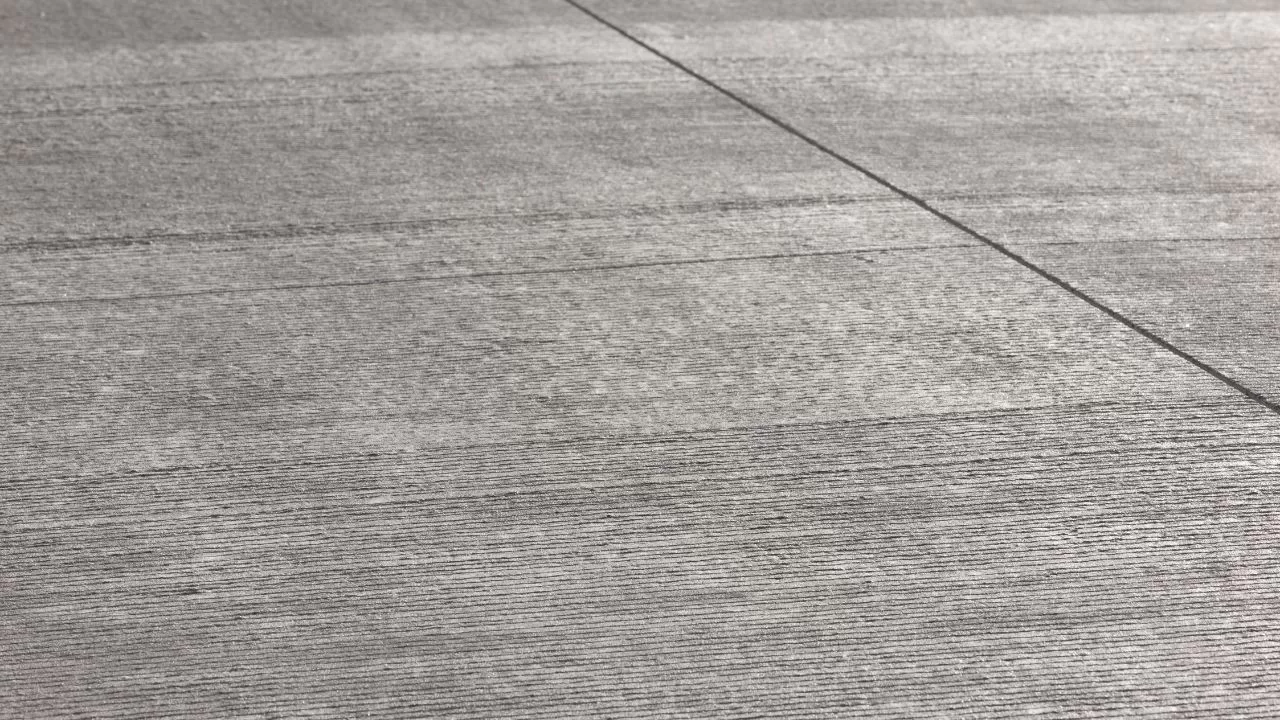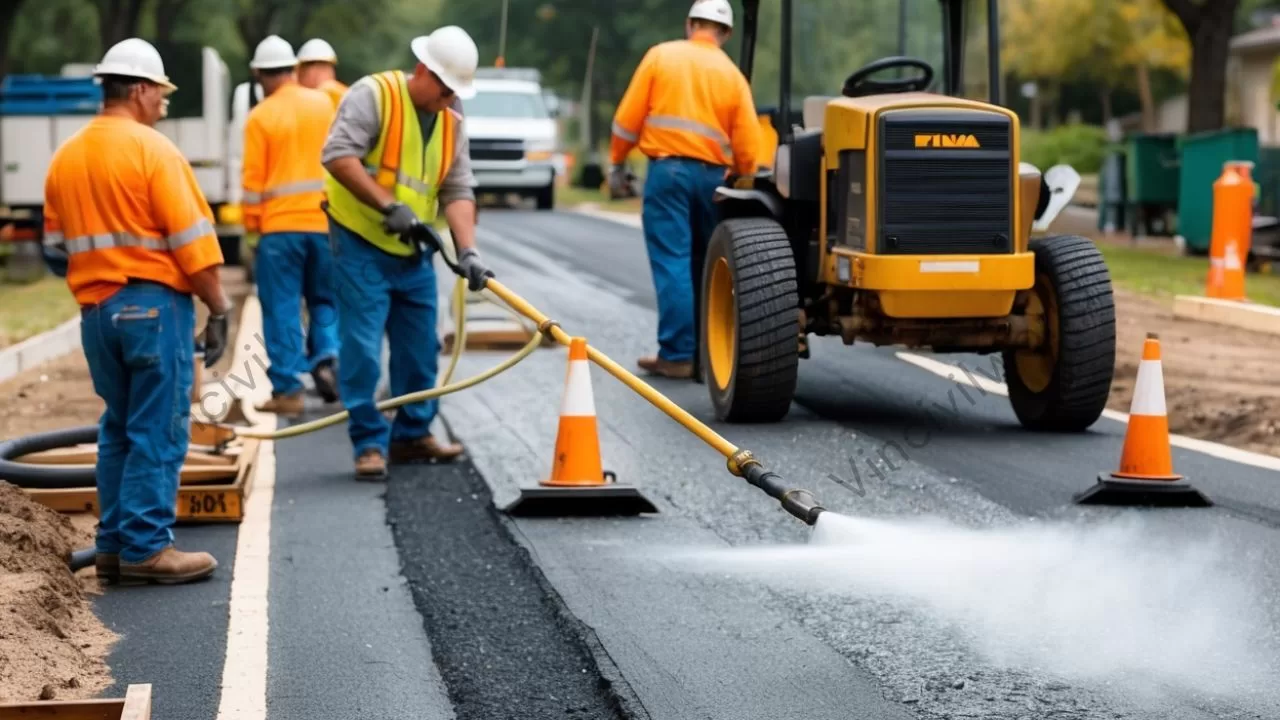Road camber, also known as the cross slope, is the slight curvature found on the surface of a road. This slope is incorporated into the design. Camber in road is designed primarily to aid efficient drainage. Water runs off towards the edges of the road. This prevents waterlogging or puddling. This minimizes risks such as hydroplaning, which can lead to accidents, especially in wet conditions. A properly cambered road contributes to road longevity, as pooling water can accelerate surface wear.
Camber in roads is typically expressed as a ratio or percentage. The road has a slight rise in the middle that tapers down towards the sides. For example, when the road camber is 1 in 30, the road rises 1 meter for every 30 meters horizontally. This slope helps in draining water more efficiently, enhancing both safety and comfort for drivers.
This article discusses the importance of camber in roads. It also covers the different types of cambers. Additionally, it examines the factors influencing the design of road cambers.
Table of contents
Importance of Road Camber
- Efficient Drainage: The primary function of road camber is to prevent water from accumulating on the road surface. By sloping towards the edges, water quickly drains off, reducing the risk of water-related accidents.
- Enhanced Road Durability: Water pooling on roads without proper camber can lead to damage over time. Cambered roads help maintain the structural integrity of the pavement, increasing its lifespan.
- Improved Safety: A well-designed road camber improves vehicle stability. It enhances traction, especially in wet conditions. This design minimizes the risk of water accumulation. This is particularly important for high-speed highways where even small amounts of water can cause dangerous skidding.
Types of Camber
Depending on the location, weather conditions, and road type, engineers use several types of camber.
- Positive Camber
- Negative Camber
- Zero Camber
- Straight Camber
- Parabolic Camber
- Composite Camber
Lets us dive into the detail of each type of cambers.
Positive Camber
Positive camber is the angle of a vehicle’s wheels. The top of the tire tilts outward from the centre of the vehicle. This can provide improved stability and handle in certain driving situations, such as high-speed cornering. However, excessive positive camber can lead to uneven tire wear and decreased handling performance.

Negative camber in roads
Negative refers to the angle of a vehicle’s wheels where the top of the tire tilts inward towards the centre of the vehicle. This can provide improved grip and handling during cornering, as the tire maintains more contact with the road. However, excessive negative camber can lead to uneven tire wear and reduced straight-line stability.

Zero camber
Zero camber describes the angle of a vehicle’s wheels. In this position, the tire is perpendicular to the ground. The wheel stands vertically. Engineers consider this the ideal angle for tire wear and handling, as it provides a balance between straight-line stability and cornering grip. Many production vehicles’ designs feature zero camber to ensure optimal performance and safety.

Straight Camber (Uniform Camber)
This type of road camber has a uniform slope from the center to the edge of the road. It’s commonly used in low-traffic roads where simple and effective drainage is required. Though effective in water drainage, it can cause slight discomfort to drivers while overtaking.

Parabolic Camber
Also known as rounded camber, this type slopes more gradually towards the edges, forming a curved shape. This camber in roads provides smoother driving experiences, which is essential on high-speed roads. It is often found on highways and is preferred for its balance of drainage and driving comfort.

Composite Camber
A combination of straight camber and parabolic camber, the composite camber has a flat middle section with sloping sides. This design is often used on roads where both efficient drainage and driving comfort are prioritized.

Positive Camber vs. Negative Camber
Let us have a look at the key differences between positive camber and negative camber.
| Feature | Positive Camber | Negative Camber |
|---|---|---|
| Slope Direction | Slopes downwards from the center to the edges. | Slopes inward, towards the center of the road. |
| Purpose | Facilitates water drainage off the road surface. | Rarely used; can cause water accumulation in the center. |
| Common Usage | Standard design in roads and highways to prevent water pooling. | Found on specialized tracks or circuits for cornering assistance. |
| Road Safety | Increases road safety by preventing water from pooling, reducing the risk of skidding. | Can lead to dangerous driving conditions if water pools in the middle of the road. |
| Applications | Most common in all road types, especially in rainy regions. | Specialized use in racing tracks and high-speed circuits. |
| Impact on Vehicles | Promotes better traction and reduces wear on tires. | Can increase cornering speed on race tracks but is unsafe for regular roads. |

This comparison highlights the key differences between positive camber and negative camber. It focuses on their design, usage, and impact on road safety. It also examines their effects on vehicle performance.
Factors Influencing the Design of Road Camber
- Type of Road: Heavily trafficked roads like highways or major thoroughfares usually have more sophisticated camber designs. These include parabolic camber. Rural roads may have simple straight cambers. Road camber is determined based on the volume of traffic. The type of vehicles using the road also influences it. Additionally, local weather conditions play a role.
- Weather Conditions: In regions with heavy rainfall, a steeper road camber is required to allow for quick water runoff. This prevents water accumulation, which is crucial in areas prone to flooding or where rainfall is frequent and intense.
- Road Geometry: The shape of the road includes its curves and length. These factors play a significant role in the design of camber in roads. Roads with sharp curves often require additional camber. This is known as superelevation. The outer edge of the curve is raised to provide vehicles with more stability while cornering at speed.
Effects of Improper Road Camber
An improperly cambered road can lead to several issues:
- Pooling of Water: If the road camber is not designed properly, water may pool in certain areas. This can lead to higher risks of accidents due to hydroplaning.
- Increased Wear and Tear: Roads lacking the proper camber will allow water to remain on the surface longer. This causes increased degradation of the road material. This can result in potholes and cracks forming more quickly.
- Driver Discomfort: Excessive camber of the road can make driving uncomfortable, especially when vehicles are overtaking or turning. Roads with improperly steep slopes can cause a sensation of being pulled to one side.

Camber in Road Curves and Superelevation
In curved roads, road camber often involves additional slope, called superelevation. In these cases, the outer edge of the curve is raised higher than the inner edge. Superelevation is critical in ensuring that vehicles can safely navigate curves at higher speeds without losing traction or stability. This type of road camber counters the centrifugal forces exerted on a vehicle when turning. It provides additional safety on winding or mountainous roads.
Urban vs. Rural Road Camber Design
In urban areas, the design of road camber tends to be flatter. This is due to the lower speeds and higher pedestrian traffic. These areas rely more on surface drainage systems like gutters and storm drains. In contrast, rural and highway roads have a more pronounced camber to handle higher-speed vehicles. They manage larger volumes of water runoff because of the lack of storm drainage systems.
Importance of Positive Camber in Road Safety
The vast majority of roads feature positive camber for good reason: it enhances vehicle stability and prevents water accumulation. Positive camber helps vehicles maintain traction on wet surfaces and provides a smoother driving experience. In contrast, negative camber, as mentioned, can be dangerous on general roads. However, it has niche applications in certain high-performance track designs.
Recommended Values of Camber in Road For Different Types of Road surface by IRC:
The Indian Road Congress (IRC) provides recommended values for camber in road design, based on the type of road surface. These values are as follows:
- Flexible Pavement on Earth Embankment
- Straight: 1.5%
- Crossfall: 2.5%
- Flexible Pavement on Soft Soil
- Straight: 2%
- Crossfall: 3.5%
- Rigid Pavement on Earth Embankment
- Straight: 2%
- Crossfall: 3%
- Rigid Pavement on Soft Soil
- Straight: 2.5%
- Crossfall: 4%
- Bituminous Wearing Course
- Straight: 1.5%
- Crossfall: 2.5%
“These values provide general guidance only and depend on local conditions, traffic volume, and other factors. It is important to note that.”
Disadvantages of excessive road camber
Providing excessive road camber height can have several disadvantages. These include:
- Uneven tyre wear: Excessive camber height can cause the tire to wear unevenly. This results in reduced tire life. It also leads to increased maintenance costs.
- Increased fuel consumption: High camber angles can increase rolling resistance. This reduces fuel efficiency and leads to higher fuel consumption. Consequently, there are more greenhouse gas emissions.
- Reduced braking performance: Excessive camber can reduce the contact area between the tire and the road surface. This reduces braking performance and increases stopping distances.
- Reduced stability: High camber angles can reduce vehicle stability, especially at high speeds. This makes the vehicle more difficult to control. It also increases the risk of accidents.
- Uncomfortable ride: Excessive camber can cause the vehicle to ride harshly. It transmits more shocks and vibrations to the occupants. This leads to discomfort and fatigue during long journeys.
Key Takeaways
- Road camber is a crucial element in road design, facilitating efficient drainage by sloping from the center to the edges.
- There are different types of camber. These include straight camber, parabolic camber, and composite camber. Each is suited to specific road conditions.
- Positive camber is the most commonly used. It ensures water runoff and improves road safety. Negative camber is rare. It is primarily used in specialized tracks.
- A properly designed cambered road enhances driving comfort. It also improves the durability of the road surface. This design minimizes damage due to water pooling.
- Superelevation in curves helps vehicles maintain stability by countering centrifugal forces during turns.
Conclusion
Road camber is a critical element in road construction, influencing both safety and durability. Engineers can design roads with optimal drainage by understanding the different types of camber. These include straight camber, parabolic camber, and composite camber. This design also enhances comfort for drivers. Whether it’s on a major highway or a rural lane, the right camber of the road ensures that water doesn’t pool. It keeps the surface durable. This also lets vehicles drive safely, even in poor weather conditions. Properly designed cambered roads not only improve safety but also extend the life of road infrastructure.




